Related Research Articles

A cemetery, burial ground, gravesite, graveyard, or a green space called a memorial park, is a place where the remains of dead people are buried or otherwise interred. The word cemetery implies that the land is specifically designated as a burial ground and originally applied to the Roman catacombs. The term graveyard is often used interchangeably with cemetery, but a graveyard primarily refers to a burial ground within a churchyard.
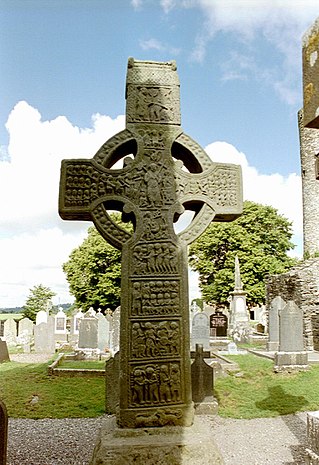
A high cross or standing cross is a free-standing Christian cross made of stone and often richly decorated. There was a unique Early Medieval tradition in Ireland and Britain of raising large sculpted stone crosses, usually outdoors. These probably developed from earlier traditions using wood, perhaps with metalwork attachments, and earlier pagan Celtic memorial stones; the Pictish stones of Scotland may also have influenced the form. The earliest surviving examples seem to come from the territory of the Anglo-Saxon kingdom of Northumbria, which had been converted to Christianity by Irish missionaries; it remains unclear whether the form first developed in Ireland or Britain.

A sarcophagus is a coffin, most commonly carved in stone, and usually displayed above ground, though it may also be buried. The word sarcophagus comes from the Greek σάρξsarx meaning "flesh", and φαγεῖνphagein meaning "to eat"; hence sarcophagus means "flesh-eating", from the phrase lithos sarkophagos, "flesh-eating stone". The word also came to refer to a particular kind of limestone that was thought to rapidly facilitate the decomposition of the flesh of corpses contained within it due to the chemical properties of the limestone itself.

A headstone, tombstone, or gravestone is a stele or marker, usually stone, that is placed over a grave. It is traditional for burials in the Christian, Jewish, and Muslim religions, among others. In most cases, it has the deceased's name, date of birth, and date of death inscribed on it, along with a personal message, or prayer, but may contain pieces of funerary art, especially details in stone relief. In many parts of Europe, insetting a photograph of the deceased in a frame is very common.

St Pancras Old Church is a Church of England parish church on Pancras Road, Somers Town, in the London Borough of Camden. Somers Town is an area of the ancient parish and later Metropolitan Borough of St Pancras.
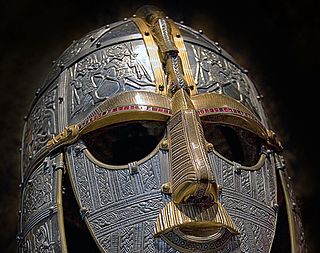
Anglo-Saxon paganism, sometimes termed Anglo-Saxon heathenism, Anglo-Saxon pre-Christian religion, or Anglo-Saxon traditional religion, refers to the religious beliefs and practices followed by the Anglo-Saxons between the 5th and 8th centuries AD, during the initial period of Early Medieval England. A variant of Germanic paganism found across much of north-western Europe, it encompassed a heterogeneous variety of beliefs and cultic practices, with much regional variation.

God's Acre is a churchyard, specifically the burial ground. The word comes from the German word Gottesacker, an ancient designation for a burial ground. The use of "Acre" is related to, but not derived from the unit of measurement and can be of any size. In the early 17th century the term was used as a translation of the German, but by the end of the century, it was accepted as an English term.
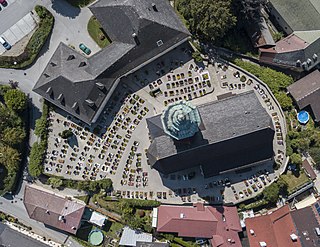
In Christian countries a churchyard is a patch of land adjoining or surrounding a church, which is usually owned by the relevant church or local parish itself. In the Scots language and in both Scottish English and Ulster-Scots, this can also be known as a kirkyard.
Assarting is the act of clearing forested lands for use in agriculture or other purposes. In English land law, it was illegal to assart any part of a royal forest without permission. This was the greatest trespass that could be committed in a forest, being more than a waste: while waste of the forest involves felling trees and shrubs, which can regrow, assarting involves completely uprooting all trees—the total extirpation of the forested area.
Icelandic funerals are ceremonies that are largely shaped by the Evangelical Lutheran Church of Iceland, the largest Christian organisation in Iceland. However, customs may vary depending on religious group.
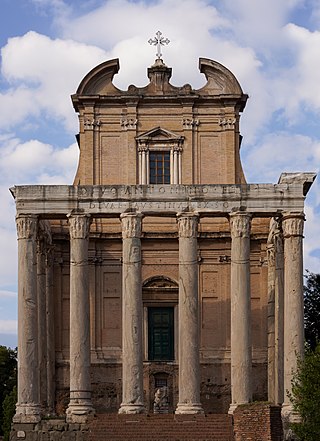
The Christianization of sites that had been pagan occurred as a result of conversions in early Christian times, as well as an important part of the strategy of Interpretatio Christiana during the Christianization of pagan peoples. The landscape itself was Christianized, as prominent features were rededicated to Christian saints, sometimes quite directly, as when the island of Oglasa in the Tyrrhenian Sea was christened Montecristo.

A cillín is a historic burial site in Ireland, primarily used for stillborn and unbaptized infants. These burial areas were also used for the recently deceased who were not allowed in consecrated churchyards, including the mentally disabled, suicides, beggars, executed criminals, and shipwreck victims.

A rural cemetery or garden cemetery is a style of cemetery that became popular in the United States and Europe in the mid-19th century due to the overcrowding and health concerns of urban cemeteries. They were typically built 1–5 mi (1.6–8.0 km) outside of the city, far enough to be separated from the city, but close enough for visitors. They often contain elaborate monuments, memorials, and mausoleums in a landscaped park-like setting.

In archaeology, earthworks are artificial changes in land level, typically made from piles of artificially placed or sculpted rocks and soil. Earthworks can themselves be archaeological features, or they can show features beneath the surface.
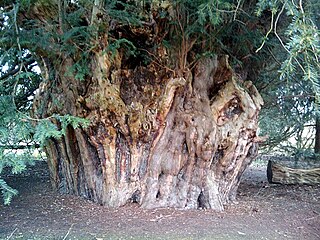
The Ankerwycke Yew is an ancient yew tree close to the ruins of St Mary's Priory, the site of a Benedictine nunnery built in the 12th century, near Wraysbury in Berkshire, England. It is a male tree with a girth of 8 metres (26 ft) at 0.3 metres. The tree is at least 1,400 years old, and could be as old as 2,500 years.

The Taplow Barrow is an early medieval burial mound in Taplow Court, an estate in the south-eastern English county of Buckinghamshire. Constructed in the seventh century, when the region was part of an Anglo-Saxon kingdom, it contained the remains of a deceased individual and their grave goods, now mostly in the British Museum. It is often referred to in archaeology as the Taplow burial.

St Michael on Greenhill is a parish church in Lichfield, Staffordshire in England, located on the high ground of Greenhill in the east of the city. A church has been on the present site since at least 1190 but the current building dates mainly from the restoration of 1842–43. The churchyard is one of five ancient burial grounds in England and is one of the largest churchyards in the country at 9 acres (36,000 m2).
Burial in Anglo-Saxon England refers to the grave and burial customs followed by the Anglo-Saxons between the mid 5th and 11th centuries CE in Early Mediaeval England. The variation of the practice performed by the Anglo-Saxon peoples during this period, included the use of both cremation and inhumation. There is a commonality in the burial places between the rich and poor – their resting places sit alongside one another in shared cemeteries. Both of these forms of burial were typically accompanied by grave goods, which included food, jewelry, and weaponry. The actual burials themselves, whether of cremated or inhumed remains, were placed in a variety of sites, including in cemeteries, burial mounds or, more rarely, in ship burials.
An Anglo-Saxon multiple estate was a large landholding controlled from a central location with surrounding subsidiary settlements. These estates were present in the early Anglo-Saxon period, but fragmented into smaller units in the late Anglo-Saxon period. Despite some academic criticism, the concept has been widely used and a large number of possible examples have been proposed.

The English coastal city of Brighton and Hove, made up of the formerly separate Boroughs of Brighton and Hove in East Sussex, has a wide range of cemeteries throughout its urban area. Many were established in the mid-19th century, a time in which the Victorian "cult of death" encouraged extravagant, expensive memorials set in carefully cultivated landscapes which were even recommended as tourist attractions. Some of the largest, such as the Extra Mural Cemetery and the Brighton and Preston Cemetery, were set in particularly impressive natural landscapes. Brighton and Hove City Council, the local authority responsible for public services in the city, manages seven cemeteries, one of which also has the city's main crematorium. An eighth cemetery and a second crematorium are owned by a private company. Many cemeteries are full and no longer accept new burials. The council maintains administrative offices and a mortuary at the Woodvale Cemetery, and employs a coroner and support staff.
References
- 1 2 3 4 Muir, Richard (2004). Landscape Encyclopedia:A Reference Guide to the Historic Landscape. 29 Bishop Road, Bollington: Windgather Press. p. 33. ISBN 0-9545575-1-4.
{{cite book}}: CS1 maint: location (link) - ↑ Muir, Richard (2007). Be Your Own Landscape Detective. Glouchester, UK: Sutton Publishing Ltd. pp. 158–181. ISBN 978-0-7509-4333-8.
- 1 2 Yorke, Trevor (2010). Gravestones, Tombs, and Memorials. Newbury, Berkshire, UK: Countryside Books. p. 10. ISBN 978-1-84674-202-6.
- ↑ Muir, Richard (2004). Landscape Encyclopedia:A Reference Guide to the Historic Landscape. 29 Bishop Road, Bollington: Windgather Press. p. 34. ISBN 0-9545575-1-4.
{{cite book}}: CS1 maint: location (link)